Bayeux itself is a very lovely town with many medieval, half-timbered houses, beautiful old houses behind stone walls and large gates and of course the cathedral.
 Maison on the main street | 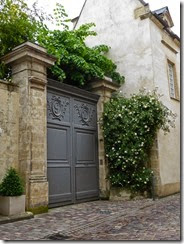 Roses and gateway | 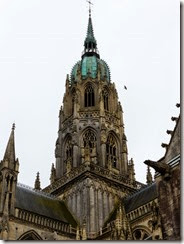 The cupola of the cathedral |
We had stayed one night on a previous occasion in Bayeux and so were not intending to see the tapestry but to see some of the WW2 D-Day places, with a guide. We chose Overlord Tours and to see the Canadian and UK sites rather than the American ones. What we hadn’t figured in was that June 6 is the 70th anniversary of D-Day so plans for all sorts of visitors and festivities were well underway and the place will be closed off in a fortnight from now.
There was just our guide Olivier and young Canadian couple and us, so the tour was quite personalised. It was also a bit disjointed. There is little in the way of photos or relics to record the landings on these beaches, Juno, Gold and Sword because the residents needed to rebuild later whereas the US landing areas were less well built up and much of the visual remains are still there. And they took lots of photos.
First stop a German gun battery where guns are still in place, which is quite rare because of the value of the metal after the war. These batteries were almost impregnable unless hit directly or blown up by hand grenade. It was in one of these that the first scene from The Longest Day was shot, the one where the officer looks out to sea and sees the fog lift to reveal the landing fleet (except that he apparently wasn’t there but off dallying somewhere instead).
Then to Arromanches. We had previously seen some of the caissons on the beaches and parts of the Mulberry Harbour that were towed over to protect the fleet as it landed, however, I was not aware that these concrete things on the beach were once floating pontoons which were joined by metal bridge sections so the tanks and trucks could drive from the ship to the shore and the Red Cross trucks could drive the wounded back to the ships. What a massive undertaking to prepare and tow these things across the channel. Overall, the thing that most impressed was the logistics of the undertaking, especially when we consider the massive egos of the various leaders of the time.
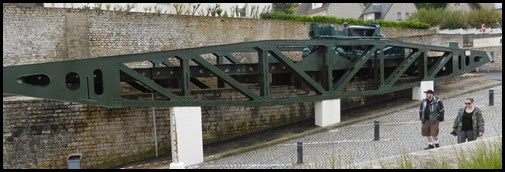
A section of bridge
So as the fleet arrived, landing craft attempted the beaches which were under sideways gunfire and then the troops were to capture the gun placements so the unloading could commence. There was very heavy loss of the landing craft as they attained the beaches, though most of the big guns could not be fired seawards here; the Germans expected attack from inland or along the beach, but that also meant that to capture the guns they had to be able to aim right into the bunker, and that meant getting a tank in the right position, in one case through the village and up the street leading to the gun emplacement.
Some of the soldiers had to make their way inland to capture the bridges across the Orne River and canal at Pegasus Bridge. Without these bridges the allies couldn’t move easily to Caen. This was where the first strike of D-Day really happened. The 6 Horsa gliders towed by aircraft were released to glide into the area. One landed less than 100m from Pegasus bridge very soon after midnight. Each carried 30 men and a small armoured truck and under cover of decoy bombing they landed without the Germans being aware and secured the bridge while the group of commandos from the landing barges met up with them by about lunch time. The commandos were led by the Scottish Lord Lovat who had his piper play them into battle. Legend is the Germans refused to shoot the piper because they though him mad.
When it became necessary to replace Pegasus Bridge with a wider one, a man bought the original and it now stands in the grounds of the nearby museum, along with a replica glider as the originals were “harvested” by locals for wood and building materials.
Finally, of course, we visited some of the cemeteries. The British liked to bury their dead as near as possible to where they fell, so often there were some graves in local cemeteries as well as in Commonwealth War Graves.
|
“Into the mosaic of victory was laid this precious piece”
|
I certainly finished the day with a much clearer understanding of this section of history.
In the morning another lovely breakfast, then a local market to wander through. Nick bought two jars of honey and I tasted some farmers calvados which would strip the duco off a car. Then off to the local museum where we wandered through the old Palais de Justice rooms and then through a museum from pre-history to the modern day.
The thing that most amazed was the lace. This is bobbin lace made by intertwining thread around pins which make the “holes” in the lace. I still don’t understand what keeps it from untwining. The patterns are pricked out on paper and that allowed a number of women to work on the same design and then pieces would be stitched together. Mind bogglingly detailed and time consuming work. The beautiful shawl used as an example would have taken thousands of hours. A nearby shop/museum of the art had little edged handkerchiefs or lace motifs saying something like 24 hours of work and priced at about E3/hour or E72 a piece.
In the afternoon we re-visited the cathedral and its beautiful old crypt. Their major contribution to the celebrations is the baptism of a new bell, the Peace Bell. Now it sits in the centre of the nave awaiting the ceremonies. The next day we visited its foundry.
 | 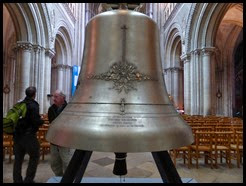
The new Peace bell
|
Tomorrow: The little town of Vitre
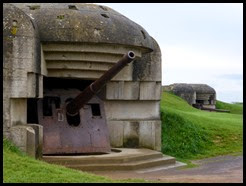
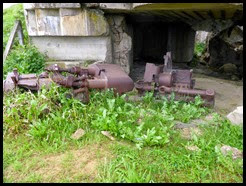
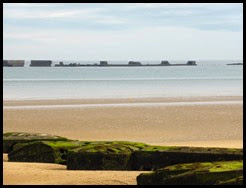
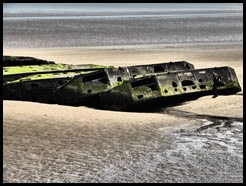
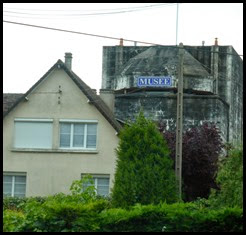
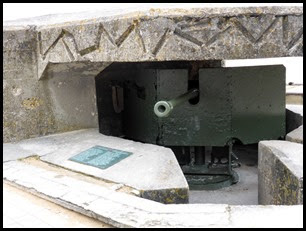
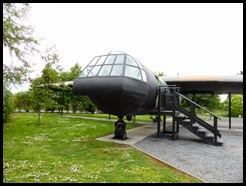

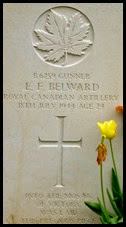
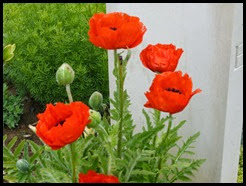
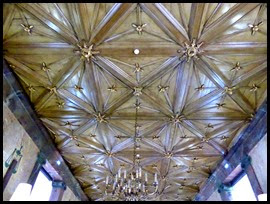
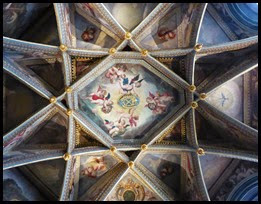

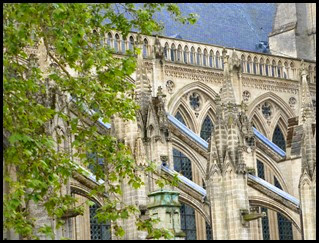

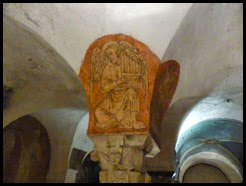
No comments:
Post a Comment